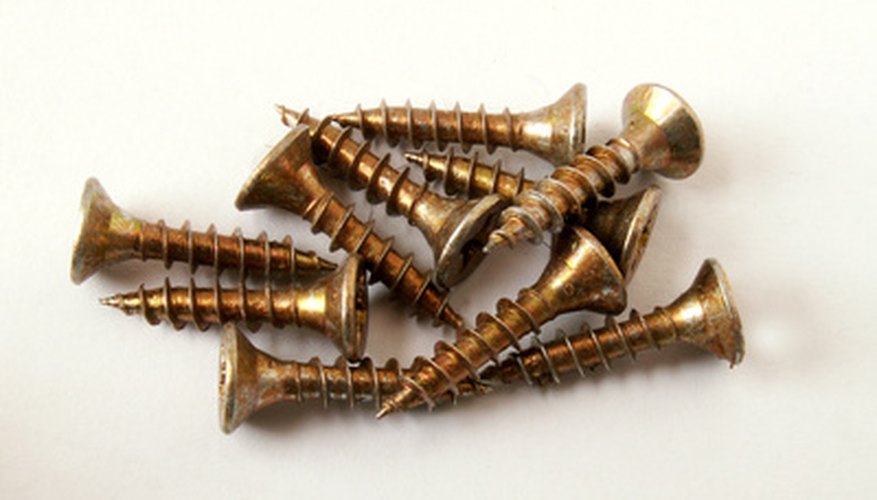Screws are extremely handy fasteners because they are easily removed if you change your mind about your construction, but they aren't always the right fastener for the job. Nails, staples, bolts and adhesives are all fastener options that may work better than screws for certain projects. Using the appropriate fastener for the job can make your finished project stronger and more attractive.
Visibility
Screws have very noticeable heads that are difficult to hide discretely. This may be an advantage in some instances because you can find them easily, but it can mar decorative objects or make your projects unattractive. Whether the screw heads are slotted, Phillips, star or square doesn't matter -- each is easily visible even when the screw colour matches the surrounding area.
- Screws are extremely handy fasteners because they are easily removed if you change your mind about your construction, but they aren't always the right fastener for the job.
- This may be an advantage in some instances because you can find them easily, but it can mar decorative objects or make your projects unattractive.
Material destruction
Screws can rip right through certain materials, making them a poor fastener choice for weak, thin woods. Door skin -- 3 mm (1/8 inch) plywood and similar materials may allow screw heads to sink or rip right through. Very soft woods such as balsa will also sink or dent under the pressure of a screw head being driven in.
Inability to hold
Some projects are simply too heavy for regular screws. Structural components are often best joined with bolts, particularly if any weight must be placed on the connector.
Head hazards
For a smooth, even surface, screw heads must be countersunk precisely. This means that in addition to the hole the screw shank goes into, a wider hole with angled sides must be drilled to allow the full thickness of the screw head to sink into the project's surface. Without the countersink, the screw head sticks out and can catch on passing materials, becoming dangerous.
Stripping
With repeated use, screw heads can become stripped, meaning the slots the screwdriver fits into are worn down and the driver can no longer grip the screw head well enough to turn it. Stripped screws are difficult to remove, and the removal process can ruin the surrounding wood.
- Some projects are simply too heavy for regular screws.
- With repeated use, screw heads can become stripped, meaning the slots the screwdriver fits into are worn down and the driver can no longer grip the screw head well enough to turn it.
